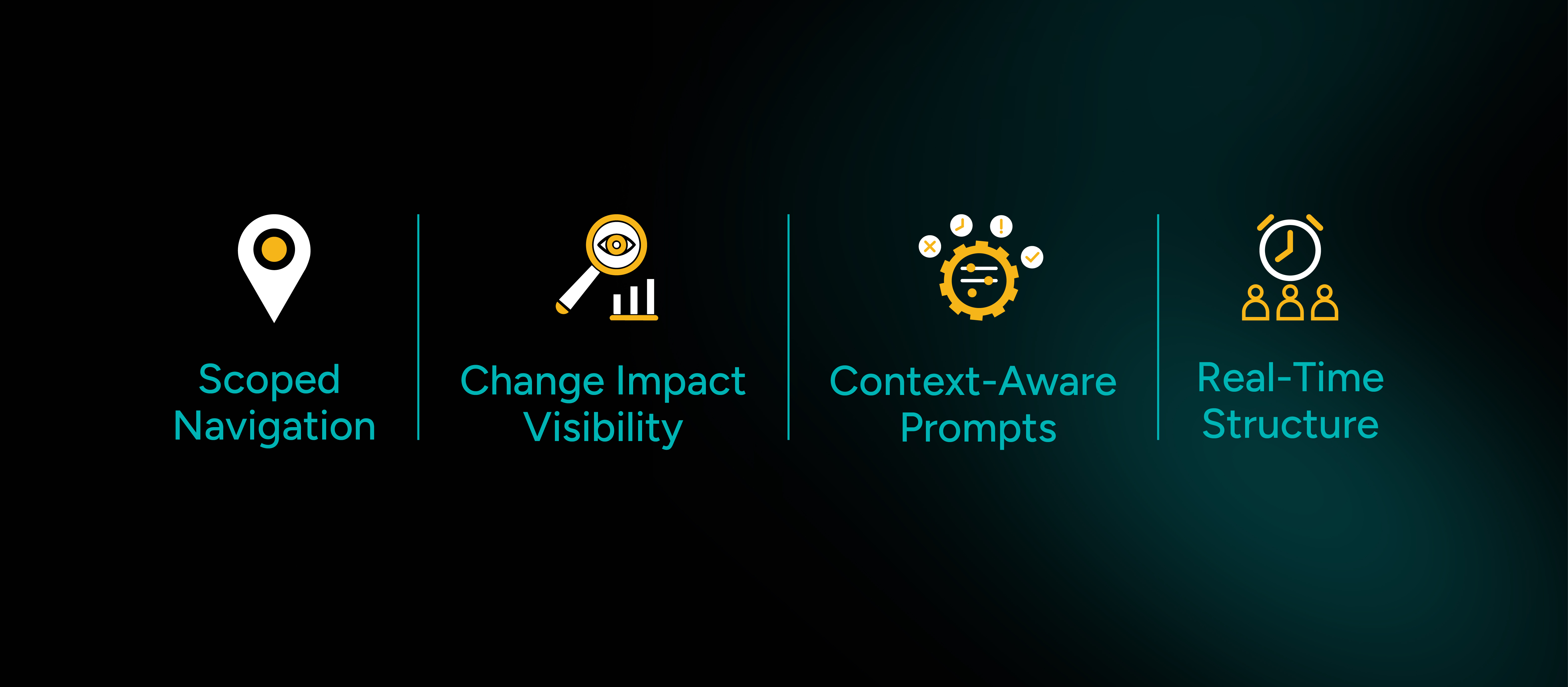October 29, 2025
The task sounded simple enough, “Fix the fallback logic for checkout.” No spec. No doc. No context.
Just a familiar kind of ticket most developers have seen before.
The assumption was that someone on the team would figure it out quickly.
But several hours later, what should have been a quick fix had turned into a rabbit hole of half-documented flows, reused helper functions, and service files that contradicted each other.
This wasn’t about vague requirements.
It was about a codebase that made even small changes harder than they had to be.
A Common Problem in Mature Engineering Teams: Codebase Navigation Without Context
Vague tickets aren’t new.
Teams know how to fill in the blanks.
But when a codebase lacks visibility, every ticket, no matter how well-written, feels like a guessing game.
It starts with global search. Then a dozen open tabs. Then digging through services that might be related, but probably aren’t. At some point, someone rewrites logic that already exists, unaware that they’re duplicating work.
And all of this happens before the actual feature even begins.
This is where delivery gets delayed, not because of technical complexity, but because the path to execution isn’t visible.
Why Traditional Tools Don’t Solve the Problem
Documentation helps, until it falls out of date and style guides work, until they’re broken in a pinch.
But documentation lives outside the code and modern development happens inside it.
What developers need isn’t a better wiki, they need real-time understanding of:
- What a file connects to
- Which modules use the logic they’re about to change
- Whether a shared function is safe to edit or critical in five other places
- Where to build without breaking what’s already working
Without that, the team is stuck guessing again.
Where Codespell’s Workspace Context Changed Everything
Things changed with Codespell’s Workspace Context.
Workspace Context doesn’t just scan the file being worked on. It understands how that file fits into the entire project. The surrounding services. The connected routes. The dependencies. The tests.
It doesn’t just generate code. It generates direction.
Here’s what improved across the team:
🔹 Scoped Navigation
No more opening a file and hoping it’s the right one.
Workspace Context highlights everything connected, related models, services, endpoints, and logic flow instantly.
🔹 Context-Aware Prompts
Suggestions don’t just match the framework they align with how the system is already built. Codespell understands the architectural context, devs stop wasting time cleaning up generic AI output.
🔹 Change Impact Visibility
Before touching a shared utility, Workspace Context reveals where else it's used reducing unintended side effects and rework in PRs.
🔹 Real-Time Structure
Instead of dumping code across the repo, every new addition lands where it should based on routing, state, folder structure, and naming conventions.

What It Changed for the Team
Workspace Context didn’t eliminate complexity.
It simply stopped hiding it.
With Codespell embedded into the development environment, developers shipped faster, not because the tickets were clearer, but because they could see where their work fit into the bigger picture.
It became easier to reuse logic instead of rewriting it.
Easier to onboard without relying on outdated walkthroughs.
Easier to make safe changes in risky parts of the codebase.
And perhaps most importantly, it removed the need for constant second-guessing.
The next vague ticket still showed up.
But this time, we didn’t start with a search bar, a dozen open tabs, or yet another Slack thread that ends in a long scroll and no clear answer.
We started with clarity.
Because when Codespell gives you context, the work speaks for itself.


.png)






.png)
.png)